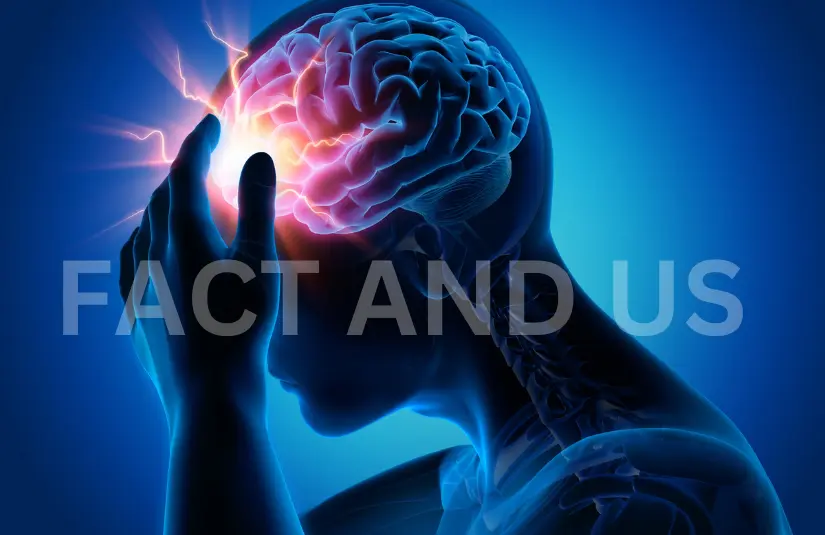Contents
- 1 TBI Facts
- 2 Traumatic Brain Injury (TBI)
- 3 Symptoms of Traumatic Brain Injury (TBI)
- 4 What are the types of traumatic brain injury medications?
- 5 The types of TBI medications include the following:
- 6 Types of traumatic brain injuries include the following:
- 7 Causes of Traumatic Brain Injury
- 8 Long-term management medications
- 9 How is a Traumatic Brain Injury (TBI) Diagnosed?
- 10 Treatment for Traumatic Brain Injury (TBI)
- 11 Military Veterans and Traumatic Brain Injury (TBI)
- 12 Traumatic Brain Injury (TBI) and Suicide Risk
- 13 We must treat the underlying conditions that increase the risk of suicide.
- 14 Our Traumatic Brain Injury (TBI) Research That is Making a Difference
TBI Facts

1) 5.3M Americans are living with a long-term disability due to a TBI
2) Every 5 seconds, someone in the U.S. suffers a traumatic brain injury
3) Over 5,000 Americans die each month from a TBI-related injury
4) TBI is the most common traumatic injury in the U.S. military
Traumatic Brain Injury (TBI)
Traumatic brain injury (TBI) can be mild or severe and is defined as damage to the brain resulting from an external mechanical force, such as rapid acceleration or deceleration, impact, blast waves, or penetration by a projectile’s are currently classified as mild, with a brief change in mental status or consciousness (commonly called concussions), moderate, or severe, with an extended period of unconsciousness and an associated higher likelihood of death.
This is based on the immediate severity of the injury, not on the symptoms someone may suffer months or even years later. Despite the misconception that a TBI is an event that occurs in isolation, for many individuals, a TBI is a chronic disease, with nearly 5.3 million people in the United States living with a permanent TBI-related disability.
Traumatic brain injury (TBI) medications are administered to treat traumatic brain injuries, prevent further (secondary) injury to the brain, and manage adverse conditions that result from a traumatic brain injury. Several classes of medications are used for emergency treatment in the immediate aftermath of a traumatic brain injury, as well as for long term management of any physiological, psychological and neurological problems arising from the TBI.
Stabilizing the patient’s vital parameters and preventing secondary injury are the immediate goals of treatment after a brain injury. Medications used during the treatment of acute phase of injury include:
- Diuretics :- to drain excess cerebrospinal fluid (CSF) and reduce the pressure in the brain (intracranial pressure)
- Magnesium :- to improve blood flow to the brain and maintain a stable state (homeostasis) in the brain
- Anticonvulsants :- such as gabapentin to prevent seizures from overactive neurons which are activated by the injury
- Sedative :- agents such as barbiturates to reduce intracranial pressure or induce a medical coma in serious brain injuries
For long-term management of TBI-related conditions, a patient may require medications such as antidepressants, muscle relaxers, pain relievers, and stimulants to treat deficits in cognitive functions such as attention, memory, learning and language.
Symptoms of Traumatic Brain Injury (TBI)

TBI symptoms and signs can include a number of damaging physical, cognitive, behavioral, and emotional impairments, such as sleep disturbances, headaches, dizziness, sensitivity to light and noise, ringing in their ears, fatigue, depression, anxiety, mood swings, difficulty concentrating, impaired decision making, memory lapses, and personality changes.
What are the types of traumatic brain injury medications?
Medications administered for traumatic brain injuries depend on the type of injury, its severity and resultant functional impairment. Medications also vary depending on the stages of treatment, which include the acute phase of treatment immediately after the injury, and long-term management of chronic symptoms.
The types of TBI medications include the following:
- Acute care medications
- Osmotic diuretics
- Anticonvulsants
- Electrolytes
- N-methyl-D-aspartate (NMDA) receptor antagonists
- Barbiturates
- Calcium channel blockers
Types of traumatic brain injury
Traumatic brain injuries may be focal, in a small specific area, or diffuse injury over a large area of the brain, which may not be apparent on a CT scan, but causes TBI symptoms.
Types of traumatic brain injuries include the following:

Hematoma:- A hematoma is a blood clot that forms inside or on the surface of the brain after an injury.
Contusion:- Contusions are areas of bruising, with injured brain tissue and blood that has leaked out of tiny blood vessels.
Hemorrhage:- Hemorrhage is uncontrolled bleeding in any part of the brain, which may be of two types:
Subarachnoid hemorrhage:- Bleeding in the space around the brain.
Intracerebral hemorrhage:- Bleeding within the brain tissue.
Diffuse axonal injury:- Axons are long, hair-like projections from nerve cells (neurons), which enable communication between nerve cells and make the body function. Diffuse axonal injury is one of the most dangerous types of TBI because it can cause severe and lasting disabilities.
Ischemia:- Ischemia is inadequate blood supply to parts of the brain, because of injury.
Skull fractures:- Skull fractures may be simple cracks in the skull or fragments of skull that push into the brain, damage brain tissue, blood vessels and nerves, and cause leakage of the cerebrospinal fluid.
Causes of Traumatic Brain Injury
Leading causes for traumatic brain injuries include the following:
Motor vehicle accidents
Falls, particularly in aged persons and children
Violent assaults and abuse
Sports injuries
Explosions
Gunshot wounds
Long-term management medications
- Stimulants
- Dopamine agonists
- Selective serotonin reuptake inhibitors (SSRIs)
- Antipsychotics
- Muscle relaxers
- Pain relievers
How is a Traumatic Brain Injury (TBI) Diagnosed?
Testing for brain injury usually begins with a neurological examination to evaluate thinking, motor and sensory function, coordination, eye movement, and reflexes. Imaging tests such as an MRI or CT scan may also be performed, but these cannot detect all TBIs. This is of particular concern for those TBIs categorized as mild, with estimates suggesting that 80-90% of all traumatic lesions can be missed, with MRI showing better sensitivity than CT.
In recent years, new tools to aid in diagnosing mild TBI or concussion have come to the U.S. market, but none of these medical devices is intended to be used alone to diagnose a TBI. Currently, there are no universally accepted diagnostic standards, and further objective diagnostic methods are needed as many TBIs are under-detected and under-treated.
Treatment for Traumatic Brain Injury (TBI)

TBI treatment is based on the severity of the injury. Generally, TBI recovery involves managing the symptoms of the underlying injury.For mild TBIs, generally, no treatment is administered outside of instructions to rest and monitor for persistent or worsening symptoms.Moderate to severe TBIs require immediate emergency medical treatment to assess the extent of brain injury, and minimize any secondary damage due to inflammation, bleeding, or reduced oxygen supply to the brain.
This secondary treatment can involve anything from surgery to removing blot clots, repairing skull fractures, and reducing bleeding in the brain to medications for treating symptoms such as seizures. Some patients who experience a moderate to severe TBI will eventually undergo rehabilitation to relearn basic skills, such as walking or talking.
Military Veterans and Traumatic Brain Injury (TBI)
For military Veterans living with TBI and brain injury, statistics show the invisible wounds continue long after they return home. The invisible wounds of war—including traumatic brain injury (TBI)—are common among those with military experience. Living with these conditions can be challenging for the person with the diagnosis, their family members, and their caregivers.
Traumatic Brain Injury (TBI) and Suicide Risk
Veterans living with TBI are at a higher risk of suicide, as they spend years waiting for a diagnosis that will explain their symptoms or cycle through numerous treatments without finding relief.
Brain trauma changes the structure and function of the brain and can lead to various cognitive, physical, and emotional symptoms.
Some of these symptoms may appear immediately after the traumatic event or brain injury, while others may be delayed, emerging months, or even years later. This complexity makes diagnosing and treating TBI more difficult. Delayed diagnosis and ineffective treatments can result in the most devastating outcome of all, suicidality. For the first time in our nation’s history, suicides from invisible wounds are outpacing the number of in-theatre deaths from physical wounds.
We must treat the underlying conditions that increase the risk of suicide.
- Despite decades of promising research and billions spent on clinical studies, there are no cures for the invisible wounds.
- Patients are diagnosed based on subjective, patient-reported symptoms, not in an objective way based on their unique biology.
- We lack reliable, evidence-based treatments.
Our Traumatic Brain Injury (TBI) Research That is Making a Difference

Our mission is to fast-track and advance solutions to diagnose and treat TBI. No one who experiences brain trauma should suffer the effects for a lifetime.
Stay connected with Fact and US for more such news.
